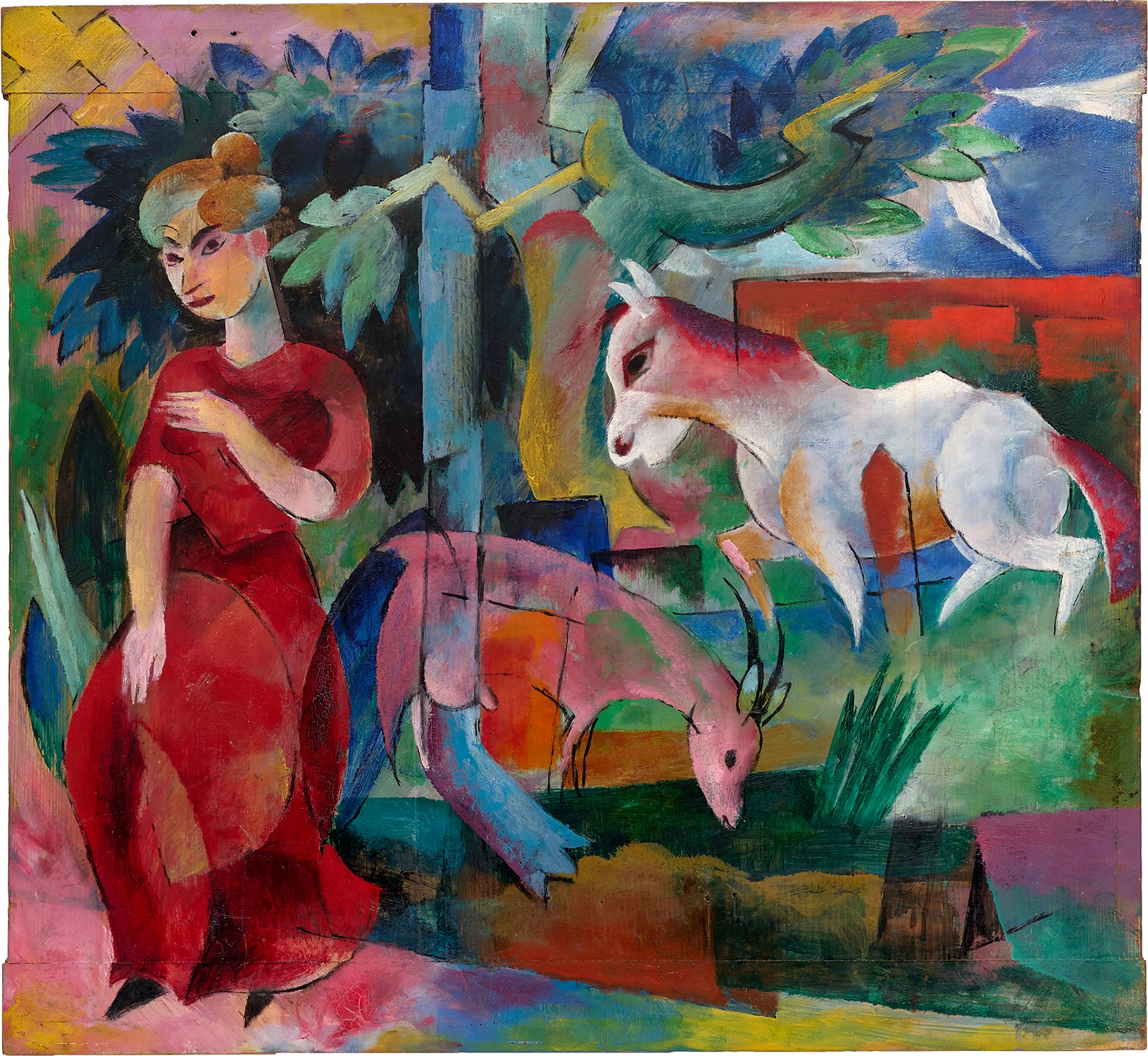

LIVING THE AVANT-GARDE: THE TRITON COLLECTION FOUNDATION
17
Heinrich Campendonk
Im Garten - Frau, Pferd, Ziege
signed and dated “Campendonk 1915” on the reverse
oil on wooden door panel
21 1/2 x 23 3/8 in. (54.5 x 59.5 cm)
Executed in 1915.